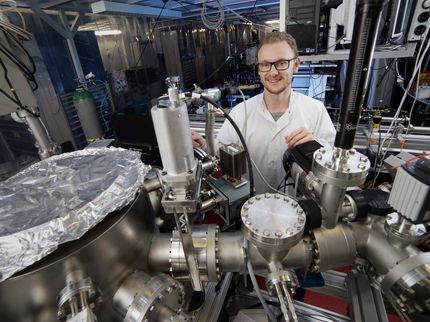Quantum physics enables revolutionary imaging method
Researchers from the Institute for Quantum Optics and Quantum Information (IQOQI), the Vienna Center for Quantum Science and Technology (VCQ), and the University of Vienna have developed a fundamentally new quantum imaging technique with strikingly counterintuitive features. For the first time, an image has been obtained without ever detecting the light that was used to illuminate the imaged object, while the light revealing the image never touches the imaged object.

New quantum imaging technique generates images with photons that have never touched to object – in this case a sketch of a cat. This alludes to the famous Schrödinger cat paradox, in which a cat inside a closed box is said to be simultaneously dead and alive as long there is no information outside the box to rule out one option over the other. Similarly, the new imaging technique relies on a lack of information regarding where the photons are created and which path they take.
Copyright: Patricia Enigl, IQQQI
In general, to obtain an image of an object one has to illuminate it with a light beam and use a camera to sense the light that is either scattered or transmitted through that object. The type of light used to shine onto the object depends on the properties that one would like to image. Unfortunately, in many practical situations the ideal type of light for the illumination of the object is one for which cameras do not exist.
The experiment published in Nature this week for the first time breaks this seemingly self-evident limitation. The object (e.g. the contour of a cat) is illuminated with light that remains undetected. Moreover, the light that forms an image of the cat on the camera never interacts with it. In order to realise their experiment, the scientists use so-called "entangled" pairs of photons. These pairs of photons – which are like interlinked twins - are created when a laser interacts with a non-linear crystal. In the experiment, the laser illuminates two separate crystals, creating one pair of twin photons (consisting of one infrared photon and a "sister" red photon) in either crystal. The object is placed in between the two crystals. The arrangement is such that if a photon pair is created in the first crystal, only the infrared photon passes through the imaged object. Its path then goes through the second crystal where it fully combines with any infrared photons that would be created there.
With this crucial step, there is now, in principle, no possibility to find out which crystal actually created the photon pair. Moreover, there is now no information in the infrared photon about the object. However, due to the quantum correlations of the entangled pairs the information about the object is now contained in the red photons – although they never touched the object. Bringing together both paths of the red photons (from the first and the second crystal) creates bright and dark patterns, which form the exact image of the object.
Stunningly, all of the infrared photons (the only light that illuminated the object) are discarded; the picture is obtained by only detecting the red photons that never interacted with the object. The camera used in the experiment is even blind to the infrared photons that have interacted with the object. In fact, very low light infrared cameras are essentially unavailable on the commercial market. The researchers are confident that their new imaging concept is very versatile and could even enable imaging in the important mid-infrared region. It could find applications where low light imaging is crucial, in fields such as biological or medical imaging.
Original publication
Other news from the department science

Get the chemical industry in your inbox
From now on, don't miss a thing: Our newsletter for the chemical industry, analytics, lab technology and process engineering brings you up to date every Tuesday and Thursday. The latest industry news, product highlights and innovations - compact and easy to understand in your inbox. Researched by us so you don't have to.





























































